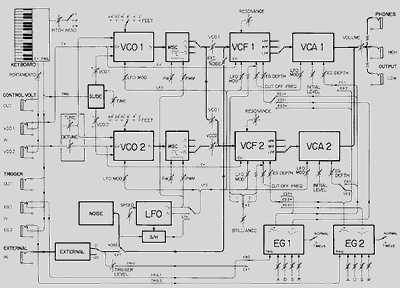MAM ADX-1 – a german made analog drum brain, introduced in the end of the 90’s. A very cheap alternative to more high-end drum machines, but can it be so cheap and sound good at the same time? Let’s have a look.
The ADX1 is a rack-mountable module, very small and handy. The machine is kind of noisy, no doubt because of cost-saving. It is equipped with 50 (rather flimsy feeling) knobs distributed over 5 channels, logically laid out. The 5 analog synth modules are: bass, synth, snare, hihat and metal.

If you expect sounds like something from another cheap and portable drum machine, the Roland TR-606, chances are that you will be disappointed. Actually, this module has more in common in sound with the Tama/simmons drum brains of the 80’s. For the price though, you get acceptable possibilities to craft percussive analog sounds. Some sonic areas you won’t be able to touch, with a flawed implementation of the bass drum channel being the main issue.
The oscillators of the ADX1 seem to not reset at each trig – one hit bass drum trig might strike lucky and start at the exactly same time as the waveform cycle of the oscillator is begun anew, but with the next it is caught right in the middle of such a cycle. In the case of percussive synthesis, this tends to diminish the percieved impact of the sound. This will not happen with for example the T-bridge construction of the TR-808 bassdrum, or the TR-909, in which the oscillator is reset.
You can still pack some nice kraftwerkish drums, as well as Simmons-like boiiieuuws and general quaint electro percussion, but still, you are limited in scope due to the fact that the pitch of the bass drum oscillator is controlled by the same envelope that also controls the VCA.
The same economical design can be found in the snare section, where the envelope also caters to several duties, both the “snap” and the noise decay. The rest of the sound is made up primarily by two band-pass filters. When the resonance is cranked up on one of them, it serves to simulate a hit on the skin of a snare, creating the “body” of the sound. The second filter then can be used for modifying the noise part of the sound. A very economic solution, but it ends up sounding weak, with a very small sweet spot.
In the hihat and metal sections non-resetting oscillators are not such a problem, and the sweet spot area is a little bit larger. One can dial up some real nice sorts of hihats and metal sounding sound effects – obviously it also has its virtues.
When production of the ADX1 ceased when MAM bought up and incorporated into Terratec, the blow out price was below 150 EUR, which makes it easy to find them at around the same price today.
A related machine in the same class that might be a good investment is the virtual analog Korg ER-1 drum machine. Similarly, it is very drum brain-like implementation but also features a useful TR-X0X-style sequencer. It is also quite a bargain, and if you are not an analog taliban it might do well when some percussive bleeps & tweets are needed.
nifesta art biennial.







 använt sig av viktiga kringtänkande strategier och låtit vissa postmoderna teoretiker influera henne. Hypnotesen använder begreppet “vikning” som ett upplösande av kategorier – och vad som kanske är mest spännande, en väg ut ur The Trap – “fällan” – begreppet som dokumentärfilmaren (experten?)
använt sig av viktiga kringtänkande strategier och låtit vissa postmoderna teoretiker influera henne. Hypnotesen använder begreppet “vikning” som ett upplösande av kategorier – och vad som kanske är mest spännande, en väg ut ur The Trap – “fällan” – begreppet som dokumentärfilmaren (experten?) 




